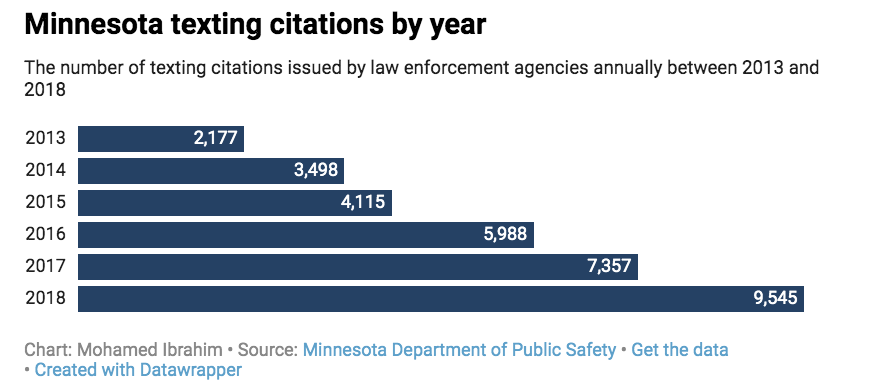Amid an increase in distracted driving, agencies statewide hope a new law will help curb accidents on Minnesota roads.
The Hands-Free Cell Phone bill, effective Aug. 1, will prohibit drivers from using wireless communications devices while operating a vehicle, with the exception of voice-activated, hands-free features. In addition to the new legislation, local and state officials have increased enforcement and rolled out education efforts aiming to reverse current distracted driving trends.
The state Legislature passed the bill, co-authored by Rep. Frank Hornstein, DFL-Minneapolis, and Sen. Scott Newman, R-Hutchinson, in March. Gov. Tim Walz signed the bill into law the following month.
“This bill before us is an effort to reverse what has become an epidemic of distracted driving on Minnesota highways.” Hornstein said in a Transportation Finance and Policy Division meeting last session. “We know bills like this work [because] they have in other states, where crash rates have dropped significantly. In short, this bill saves lives.”
According to the Minnesota Department of Public Safety, distracted driving accounted for one in every five crashes statewide and an average of 45 deaths annually between 2014 and 2018. In an effort to combat the rising numbers Minnesota law enforcement agencies cracked down on enforcement, with citations soaring by 173 percent in the same time frame.
Mike Hanson, director of the DPS’s Office of Traffic Safety, said the steep increase in citations illustrates the extent of the problem and the need for the new law.
The DPS, in association with the Minnesota State Patrol and other organizations, held a press conference June 27 to educate the public about the law and clarify what devices and when they are allowed while driving. Hanson said demographic information reflects problems across all age groups and experience levels, making education efforts more difficult.
“From brand new drivers who shouldn’t be interacting with their phone at all, right up to our senior drivers and experienced drivers who are just now getting used to this kind of technology that are using it inappropriately,” Hanson said. “Our challenge is to figure out how do we get to everybody.”
While statewide distracted driving enforcement continues to climb, citations on campus remain fairly low, said University of Minnesota Police Department Chief Matt Clark. Due to the density of pedestrians on campus and the diverse transportation methods used by members of the University community, UMPD receives more complaints about cyclists and scooter users. UMPD not only sees distracted driving instances but other hazardous behavior like cyclists listening to loud music in traffic, he said.








